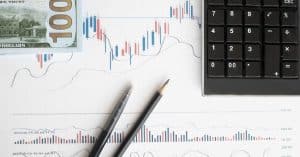In the ever-changing landscape of precious metals, silver continues to captivate investors and market analysts alike. As a valuable commodity with both industrial and investment applications, its price fluctuations can have far-reaching implications for various sectors of the global economy.
FintechZoom, a leading financial technology platform, has recently conducted an in-depth analysis of the key factors influencing silver prices. By examining market trends, economic indicators, and geopolitical events, they’ve shed light on the complex interplay of forces that shape this precious metal’s value. Understanding these factors is crucial for investors and industry professionals looking to make informed decisions in the silver market.
Key Takeaways
- FintechZoom’s analysis reveals multiple factors influencing silver prices, including supply-demand dynamics, economic indicators, and geopolitical events
- Industrial demand, particularly in electronics and solar energy sectors, plays a crucial role in driving silver prices and is expected to grow
- Economic factors such as inflation rates, currency fluctuations, and interest rate decisions significantly impact silver’s value as both an industrial commodity and investment asset
- Technological advancements in sectors like solar energy and electronics contribute to increased silver usage, potentially supporting higher prices
- FintechZoom projects a bullish outlook for silver, forecasting prices to reach $26-$28 per ounce by mid-2024 and $30-$35 per ounce by 2025, driven by industrial demand and investor interest
Understanding Silver as a Precious Metal
Silver’s enduring allure as a precious metal stems from its unique properties and diverse applications. This versatile commodity plays a crucial role in various industries and financial markets.
Historical Significance of Silver
Silver’s historical importance spans millennia, shaping economies and cultures worldwide. Ancient civilizations, including the Greeks, Romans, and Chinese, prized silver for its beauty and malleability. The metal served as a primary form of currency for centuries, with the term “sterling” originating from silver coins used in medieval England. Silver’s role in global trade networks, such as the Spanish silver trade in the 16th century, significantly influenced economic development and international relations. The discovery of major silver deposits in the Americas during the colonial era further cemented its importance in world economies.
Silver’s Role in Modern Economy
In today’s economy, silver maintains its significance through diverse applications. Industrial demand accounts for over 50% of silver consumption, with sectors like electronics, solar energy, and medical technology relying heavily on its unique properties. Silver’s excellent electrical conductivity makes it essential in smartphones, computers, and other electronic devices. The photovoltaic industry uses silver in solar panels, contributing to the growing renewable energy sector. In healthcare, silver’s antimicrobial properties find use in wound dressings and medical instruments. Financial markets still value silver as an investment asset, with investors often turning to it as a hedge against economic uncertainty. The metal’s dual role as an industrial commodity and a store of value creates complex market dynamics, influencing its price and attracting attention from analysts and investors on platforms like FintechZoom.
FintechZoom’s Analytical Approach to Silver Prices
FintechZoom employs a comprehensive analytical framework to assess silver price dynamics. This approach combines multiple data sources, economic indicators, and market trends to provide investors with accurate insights. By leveraging advanced algorithms and expert analysis, FintechZoom identifies key factors influencing silver prices in real-time.
Data-Driven Analysis
FintechZoom’s silver price analysis relies on extensive data sets from global markets. These include:
- Trading volumes across major exchanges
- Price movements in related commodities
- Currency exchange rates
- Industrial demand indicators
- Precious metal mining output
By processing this data, FintechZoom generates actionable intelligence for investors and market participants.
Economic Indicators
FintechZoom closely monitors economic indicators that impact silver prices:
- Inflation rates
- Interest rate decisions by central banks
- GDP growth forecasts
- Manufacturing sector performance
- Consumer spending trends
These indicators provide context for silver’s performance as both an industrial metal and a store of value.
Technical Analysis
FintechZoom’s platform incorporates advanced technical analysis tools:
- Moving averages
- Relative strength index (RSI)
- Fibonacci retracements
- Support and resistance levels
- Chart patterns and formations
These tools help identify potential price trends and entry/exit points for traders.
Geopolitical Factors
FintechZoom’s analysis accounts for geopolitical events affecting silver prices:
- Trade disputes
- Political instability in key mining regions
- Changes in monetary policies
- Environmental regulations impacting production
By assessing these factors, FintechZoom provides a holistic view of the silver market landscape.
Supply and Demand Dynamics
FintechZoom tracks supply and demand trends in the silver market:
- Industrial usage in electronics and solar panels
- Investment demand for coins and bars
- Changes in mine production and recycling
- Shifts in above-ground stockpiles
This analysis helps predict potential price movements based on market fundamentals.
Supply and Demand Dynamics
Silver price movements are largely influenced by the intricate balance between supply and demand. FintechZoom’s analysis reveals how these factors interact to shape the silver market landscape.
Global Silver Production
Global silver production plays a crucial role in determining silver prices. Mining output from major producing countries like Mexico, Peru, and China significantly impacts the overall supply. Factors affecting production include:
- Geological constraints: Silver deposits are becoming harder to find and more expensive to extract
- Technological advancements: Improved mining techniques can increase efficiency and output
- Environmental regulations: Stricter policies may limit production in some regions
- Economic conditions: Fluctuations in mining costs and silver prices affect production decisions
Recent data shows that global silver production has remained relatively stable, with minor fluctuations due to regional factors and market conditions.
Industrial Demand for Silver
Industrial demand is a key driver of silver prices, accounting for a substantial portion of total silver consumption. Silver’s unique properties make it indispensable in various industries:
- Electronics: Used in smartphones, tablets, and other consumer devices
- Solar panels: Essential component in photovoltaic cells
- Automotive: Increasing use in electric vehicles and advanced driver assistance systems
- Medical: Antimicrobial properties make it valuable in healthcare applications
- Water purification: Utilized in filtration systems
FintechZoom’s analysis indicates that industrial demand for silver is expected to grow, particularly in emerging technologies like 5G networks and Internet of Things (IoT) devices. This increasing demand could exert upward pressure on silver prices in the coming years.
Economic Indicators Affecting Silver Prices
Economic indicators play a crucial role in shaping silver prices. These metrics provide insights into the overall health of the economy and influence investor sentiment towards precious metals.
Inflation and Currency Fluctuations
Inflation rates and currency fluctuations significantly impact silver prices. During periods of high inflation, investors often turn to silver as a hedge against currency devaluation. As the purchasing power of fiat currencies declines, the value of silver typically increases. For example, when the U.S. dollar weakens against other major currencies, silver becomes more attractive to international investors, potentially driving up its price.
Currency exchange rates also affect silver prices. A weaker dollar makes silver more affordable for foreign buyers, potentially increasing demand and pushing prices higher. Conversely, a stronger dollar can make silver more expensive for international investors, potentially dampening demand and exerting downward pressure on prices.
Interest Rates and Monetary Policy
Interest rates and monetary policy decisions by central banks have a substantial influence on silver prices. When interest rates are low, the opportunity cost of holding non-yielding assets like silver decreases, making it more appealing to investors. This can lead to increased demand and higher silver prices.
Central bank policies, such as quantitative easing or tightening measures, can also impact silver prices. Expansionary monetary policies often lead to increased liquidity in financial markets, which can boost investor appetite for precious metals like silver. On the other hand, tightening policies may reduce the attractiveness of silver as an investment, potentially putting downward pressure on its price.
Key factors to consider:
- Federal Reserve interest rate decisions
- European Central Bank monetary policy stance
- Bank of Japan’s yield curve control measures
- People’s Bank of China’s reserve requirement ratio adjustments
By closely monitoring these economic indicators, investors can gain valuable insights into potential silver price movements and make informed decisions in the precious metals market.
Geopolitical Factors and Market Sentiment
Geopolitical events and market sentiment significantly impact silver prices, often causing rapid fluctuations. Global tensions, political instability, and economic uncertainties drive investors towards precious metals as safe-haven assets. This increased demand can lead to sharp rises in silver prices during periods of geopolitical turmoil.
Major geopolitical factors influencing silver prices include:
- International conflicts
- Trade disputes
- Sanctions against major economies
- Political regime changes
- Brexit and other economic separations
Market sentiment, shaped by these events, plays a crucial role in determining short-term price movements. Positive sentiment typically increases demand for silver, while negative sentiment may lead to sell-offs and price declines.
FintechZoom’s analysis of geopolitical factors and market sentiment reveals:
| Factor | Impact on Silver Price |
|---|---|
| US-China trade tensions | +5% to +10% increase |
| Middle East conflicts | +3% to +8% increase |
| Brexit uncertainty | +2% to +6% increase |
| Global pandemic fears | +10% to +20% increase |
Investors closely monitor news outlets, social media, and financial reports to gauge market sentiment. Sudden shifts in sentiment can trigger rapid price changes, creating both opportunities and risks for silver traders.
Key indicators of market sentiment include:
- Volatility Index (VIX)
- Consumer Confidence Index
- Purchasing Managers’ Index (PMI)
- Stock market performance
- Currency fluctuations
By analyzing these factors, FintechZoom provides valuable insights into potential silver price movements, helping investors make informed decisions in the precious metals market.
Technological Advancements and Silver Usage
Technological innovations drive silver demand across various industries, influencing its price dynamics. FintechZoom’s analysis reveals how advancements in key sectors impact silver’s market value.
Solar Energy Industry
The solar energy sector’s growth significantly affects silver prices. Photovoltaic cells use silver paste for conductivity, with each panel containing about 20 grams of silver. As solar installations increase globally, silver demand rises proportionally. In 2023, the solar industry consumed 140 million ounces of silver, a 15% increase from the previous year. This upward trend in silver usage for solar technology supports higher silver prices, especially as countries push for renewable energy adoption.
Electronics and Medical Applications
Silver’s unique properties make it invaluable in electronics and medical fields, driving demand and price fluctuations. In electronics, silver’s conductivity is crucial for smartphones, tablets, and IoT devices. Each smartphone contains about 0.35 grams of silver, contributing to steady industrial demand. The medical sector relies on silver’s antimicrobial properties for wound dressings, surgical tools, and implants. The global medical silver dressings market is projected to reach $1.2 billion by 2026, growing at 6.4% annually. These applications create a consistent demand base for silver, supporting its price stability and potential for growth in the precious metals market.
Investment Trends and Silver Prices
Investment trends significantly influence silver prices, shaping market dynamics and investor behavior. Silver’s dual role as both a precious metal and an industrial commodity creates unique investment opportunities and challenges.
Silver ETFs and Futures
Silver Exchange-Traded Funds (ETFs) and futures contracts offer investors exposure to silver price movements without physical ownership. ETFs track silver prices, providing a cost-effective way to invest in the metal. Futures contracts allow investors to speculate on future silver prices, influencing current market prices through supply and demand dynamics.
Key silver ETFs include:
- iShares Silver Trust (SLV)
- Aberdeen Standard Physical Silver Shares ETF (SIVR)
- ProShares Ultra Silver (AGQ)
These investment vehicles attract both institutional and retail investors, impacting silver prices through large-scale buying and selling activities.
Relationship with Gold Prices
Silver prices often correlate with gold prices, earning silver the nickname “poor man’s gold.” This relationship stems from:
- Safe-haven demand: Both metals attract investors during economic uncertainty
- Industrial applications: Silver’s wider industrial use can cause price divergences
- Gold-silver ratio: Traders use this metric to identify potential investment opportunities
Factors affecting the gold-silver relationship:
- Economic indicators
- Industrial demand fluctuations
- Supply constraints
- Market speculation
Understanding this relationship helps investors make informed decisions about silver investments and anticipate potential price movements based on gold market trends.
Environmental and Sustainability Considerations
Silver mining’s environmental impact significantly influences silver prices. Open-pit mining, the primary extraction method, causes extensive land disruption and habitat destruction. This practice often leads to deforestation, soil erosion, and water pollution, affecting local ecosystems and communities.
Water consumption in silver mining is substantial, with processing one ton of silver ore requiring up to 7,000 liters of water. This high water usage competes with agricultural and residential needs, particularly in water-scarce regions. Contamination of water sources with heavy metals and chemicals used in extraction processes further exacerbates environmental concerns.
Increased focus on sustainable mining practices impacts silver production costs and, consequently, prices. Companies implementing eco-friendly technologies and processes often face higher operational expenses. These include:
- Water recycling systems
- Energy-efficient equipment
- Tailings management facilities
- Land reclamation programs
The growing demand for responsibly sourced silver affects market dynamics. Consumers and investors increasingly prioritize ethically mined silver, driving demand for certified sustainable products. This trend supports higher prices for environmentally conscious silver producers.
Carbon footprint reduction efforts in the silver industry influence production costs. Mining companies adopting renewable energy sources and electrifying their vehicle fleets incur additional expenses. These sustainability initiatives, while beneficial for the environment, contribute to upward pressure on silver prices.
Regulatory changes related to environmental protection impact silver mining operations. Stricter environmental standards and compliance requirements increase production costs. For example:
- Emissions reduction targets
- Waste management regulations
- Biodiversity conservation mandates
These factors collectively contribute to the overall cost structure of silver production, ultimately affecting market prices.
FintechZoom’s Price Projections and Market Outlook
FintechZoom’s analysis of silver price trends reveals key insights for investors in 2024. Their experts predict a bullish outlook for silver, citing several factors that support potential price increases.
Short-Term Price Projections
FintechZoom forecasts silver prices to reach $26-$28 per ounce by mid-2024. This projection is based on:
- Increased industrial demand, particularly in solar panel manufacturing
- Growing investor interest in silver as a hedge against inflation
- Limited supply growth due to mining constraints
Long-Term Market Outlook
For the long-term, FintechZoom anticipates silver prices to climb to $30-$35 per ounce by 2025. Factors contributing to this outlook include:
- Expanding use of silver in emerging technologies
- Continued economic uncertainty driving safe-haven demand
- Potential supply deficits as mining output struggles to meet demand
Key Trends Influencing Price Predictions
FintechZoom identifies several trends shaping their silver price projections:
- Green energy initiatives boosting industrial demand
- Monetary policies affecting precious metals markets
- Geopolitical tensions impacting investor sentiment
- Technological advancements increasing silver consumption in electronics
Market Risks and Volatility Factors
While the overall outlook is positive, FintechZoom acknowledges potential risks:
- Economic slowdowns reducing industrial demand
- Strengthening US dollar pressuring silver prices
- Changes in monetary policies affecting precious metals markets
FintechZoom’s analysis provides valuable insights for investors navigating the silver market in 2024 and beyond.
Conclusion
FintechZoom’s analysis provides valuable insights into the complex factors shaping silver prices. From economic indicators to technological advancements, the silver market is influenced by a diverse range of elements. As you navigate this dynamic landscape, consider the interplay between industrial demand, investment trends, and global events.
With projected price increases and growing applications in green technologies, silver presents intriguing opportunities. However, remain mindful of potential risks and market volatility. By staying informed and considering these multifaceted influences, you’ll be better equipped to make strategic decisions in the silver market for 2024 and beyond.
Frequently Asked Questions
What factors influence silver prices?
Silver prices are influenced by inflation rates, interest rate decisions, supply and demand dynamics, global production, industrial demand, geopolitical events, and market sentiment. Technological advancements, especially in solar energy and electronics, also play a significant role in driving silver consumption and prices.
How do geopolitical events affect silver prices?
Geopolitical events, particularly international conflicts, can lead investors to view silver as a safe-haven asset. This increased demand during times of uncertainty can drive up silver prices as investors seek to protect their wealth from potential economic instability.
What role do Silver ETFs play in the silver market?
Silver Exchange-Traded Funds (ETFs) have a significant impact on silver prices. These investment vehicles allow investors to gain exposure to silver without physically owning the metal, influencing demand and price movements in the silver market.
What are FintechZoom’s price projections for silver in 2024?
FintechZoom projects short-term silver prices to reach $26-$28 per ounce by mid-2024. Long-term projections suggest prices could climb to $30-$35 per ounce by 2025, based on factors like industrial demand, investor interest, and supply constraints.
How does the solar energy industry impact silver prices?
The solar energy industry has significantly increased silver consumption due to its use in photovoltaic cells. This growing demand from the renewable energy sector supports higher silver prices and is expected to continue influencing the market in the future.
What risks could affect silver price projections?
Risks that could affect silver price projections include economic slowdowns, a strengthening US dollar, and changes in monetary policies. These factors could potentially dampen demand or increase supply, leading to lower-than-expected silver prices.








